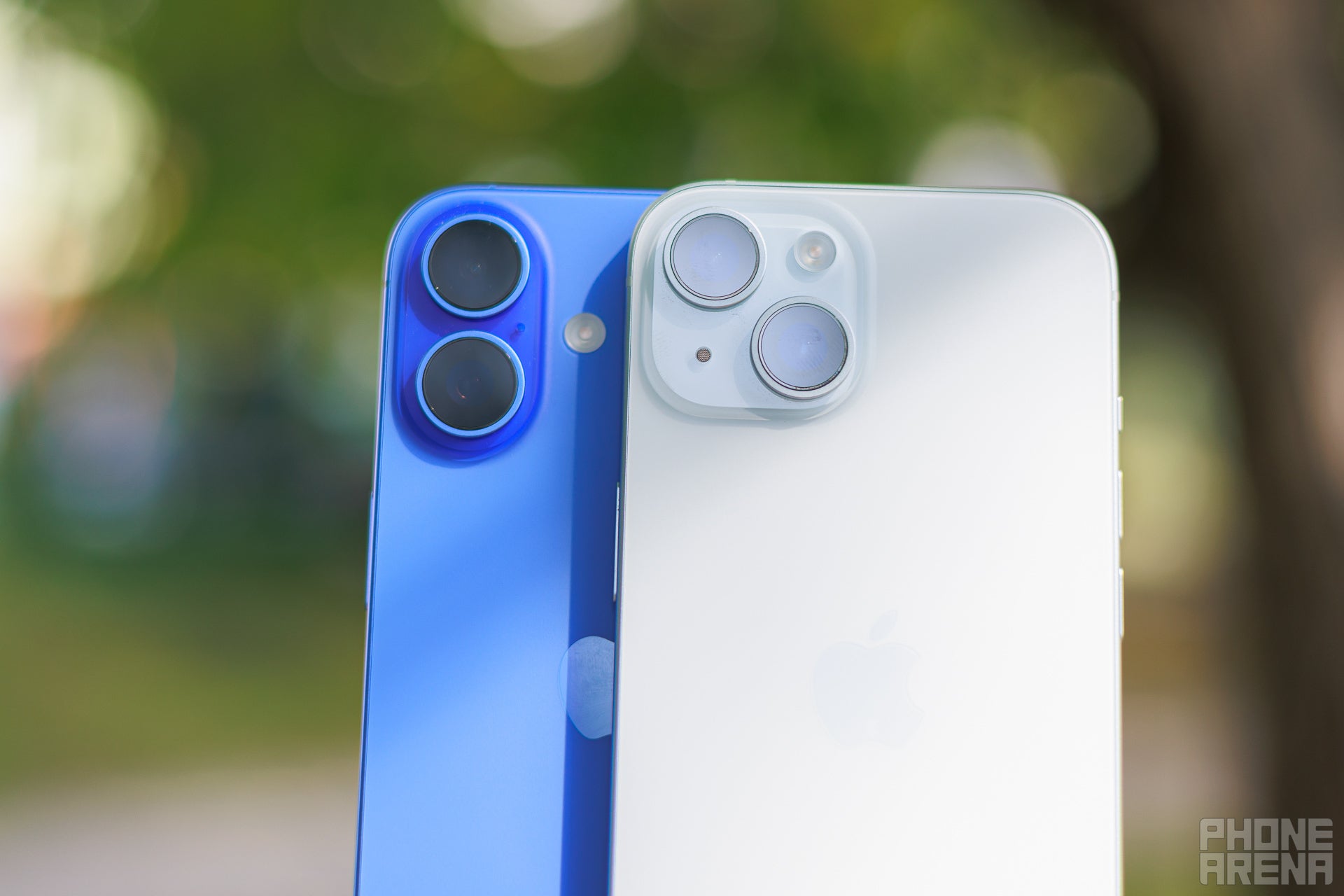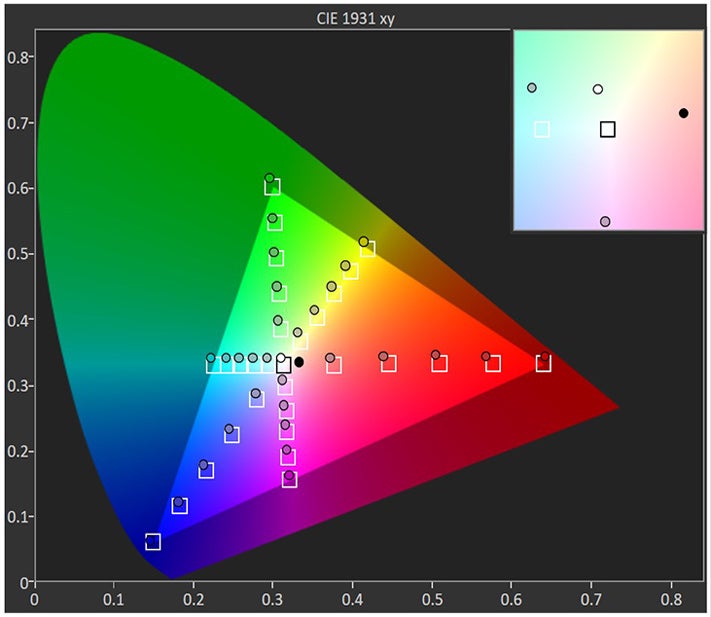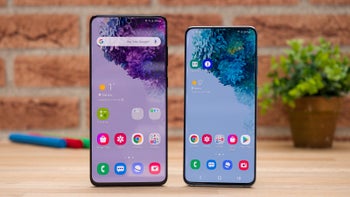iPhone 16 vs iPhone 15: All the differences explained
We may earn a commission if you make a purchase from the links on this page.

Intro
Apple's new base iPhone 16 model brings a few important improvements over the previous iPhone 15 model.
You get a fresh new design with more vibrant colors, a more powerful chip, a new Action Button and Camera Control, and even slightly improved battery life.
In this comparison, we focus on the regular iPhone 16 model, but if you are looking for more information about other models, we have a separate breakdown of the iPhone 16 Pro vs 15 Pro changes, as well as reviews of the iPhone 16 Pro Max and all the rest.
With this in mind, let's go back to the iPhone 16. This is the base and most affordable model in the lineup. The starting price stays at $800 for a 128GB configuration, which is good news considering many other brands are hiking prices.
iOS 18.2 Update: The latest iOS release, iOS 18.2, is now available for iPhones, and with it many of the advertized Apple Intelligence features are finally out. Keep in mind, though, that only the iPhone 16 supports Apple Intelligence, while the iPhone 15 does not (and never will).
So what are these features? iOS 18.2 brings the ChatGPT integration for Siri, all of the Visual Intelligence features, as well as the fun Genmoji, the Image Playground app for AI image generation, and Image Wand.
iOS 18.3 and iOS 18.4 are expected to arrive in early 2025, and with them, we should finally get the big Siri overhaul. Currently, you have the ChatGPT Siri integration, but after the upcoming update, Siri itself will become much more intelligent.
Read more: The best iPhone to buy: our verdict
iPhone 16 vs iPhone 15 differences:
| iPhone 16 | iPhone 15 |
|---|---|
| Same 6.1-inch form factor | 6.1-inch size |
| New Action Button in place of Mute Switch New Camera Control for camera | Older Mute Switch only |
| Newer and faster Apple A18 chipset | Apple A16 Bionic chipset |
| More memory, 8GB RAM | 6GB RAM |
| Support for AI | Does not support AI |
| Same storage options | 128 / 256 / 512GB storage models |
| New vertical camera with support for Spatial Video | Diagonal camera layout |
| 48MP Fusion main camera | 48MP main camera |
| 12MP ultra-wide camera with macro support | 12MP ultra-wide camera |
| Longer battery life 22 hours of video playback | 20 hours of video playback |
| Same 20W wired charging | 20W wired charging speed |
| Much faster 25W MagSafe | 15W MagSafe wireless charge |
| New color options | Blue, Pink, Green, Yellow, and Black |
Table of Contents:
Also read:
- Apple iPhone 16 Review
- Apple iPhone 16 Pro Max vs iPhone 15 Pro Max
- iPhone 16 Pro vs iPhone 16
- iPhone 15 vs iPhone 13
Design and Display Quality
New pill-shaped camera on the back and a couple of new buttons

Finally some vibrant colors! (Image by PhoneArena)
The iPhone 16 keeps the overall size and shape of the previous model, so we have a 6.1-inch form factor as before, an aluminum frame with slightly tapered edges and a matte glass finish on the back.
One improvement could be a reduced screen border, but that is not certain as Apple usually reserves such tweaks for the Pro models.
What is changing for sure, however, is the camera styling. Apple adopts a new-old vertical camera arrangement on the iPhone 16. We had that look back in the days of the iPhone X and until the iPhone 12 series, and now the iPhone 16 is going back to this pill shape. The reason for the change this time is purely practical – Spatial Video. This new 3D video format that looks stunning on the Vision Pro requires the camera lenses to be arranged in a line to work.
Another big and welcome change coming to all iPhone 16 versions, including this base iPhone 16 are buttons. You get an Action Button (which replaces the mute switch), as well as a brand new Camera Control for quickly launching the camera. This Camera Control works like a shutter key on a camera, so it will focus on a slight press and take a picture once you click it all the way in.

Buttons times two (Image by PhoneArena)
So the Action Button is on the left side, above the volume keys. Then the Camera Control is on the right, below the Power Button. This is where Apple placed the mmWave antenna previously, so that will now have to move to the bottom left side, below the volume keys.
The rest is pretty much the same: there is no change in size or weight. And of course, you still have a USB-C port on the iPhone 16, and IP68 water and dust protection.
Unfortunately, the base iPhone 16 model still only support USB 2 transfer speeds (the Pros support USB 3 since the iPhone 15 Pro model).
Oh, and in terms of colors, we get more vibrant hues which look really cool.
- Also read: iPhone 16 colors

Mostly the same screen, but it can now go slightly dimmer at night (Image by PhoneArena)
For the screen, most of the specs remain the same. You get a 6.1-inch screen size, the familiar OLED with perfect blacks.
You also get a new generation Ceramic Shield cover glass that is tougher than before and Apple says is tougher than any phone glass.
In our display lab tests, we measured quite similar numbers for maximum brightness on the iPhone 16 and iPhone 15, but the new iPhone 16 minimum brightness has dropped to 1 nit, which is a big improvement if you use your phone at night in bed.
This change is nice, but THE ONE change everyone was looking for did not happen on the iPhone 16.
We are talking about the 60Hz screen of course, or more specifically the lack of 120Hz ProMotion. The iPhone 16 still runs at 60Hz, just like the iPhone 15 and many others before. And that's a bummer! 60Hz is nowhere nearly as smooth as ProMotion.
Rumors say ProMotion will finally arrive with the vanilla iPhone 17 model in 2025, if that's any consolation.
Performance and Software
New iPhone, new chip

A big jump in performance, but will you ever notice? (Image by PhoneArena)
The iPhone 16 arrives with a new Apple A18 chip, built on second-gen 3nm technology (N3E).
In comparison, the iPhone 15 runs on the A16 Bionic chip, built on 5nm tech, so basically the newer phone features a chip that's two generations ahead.
This new chipset is also the first built from the ground up about Apple Intelligence optimizations. Apple missed the AI hype train last year, but it's fully invested in this year.
The iPhone 16 launched without Apple Intelligence, but a couple of months after the launch, Apple is now on iOS 18.2, which has delivered many of the promised AI features.
The first taste of Apple Intelligence arrived with the iOS 18.1 update, which added writing tools, notification summaries and the Clean up tool in Photos.
With iOS 18.2, we got a much bigger chunk of AI features. With this new version, Siri is now integrated with ChatGPT and you have Visual Intelligence on board. A few fun new features like Genmoji, the Image Playground AI image generator and Image Wand are also here.
And in early 2025, Apple is expected to release iOS 18.3 and iOS 18.4 with the final piece of the puzzle – the completely revamped and much smarter Siri assistant.
And speaking of AI, the iPhone 16 has 8GB of RAM, up from 6GB RAM on the iPhone 15. Most AI tasks require extra RAM and that's probably the number one reason for the upgrade.
- Also read: iPhone 16 AI features
We don't have any changes to the storage tiers, so you can choose between 128GB, 256GB or 512GB of native storage.
The iPhone 16 also uses the same modem as the iPhone 15, the Snapdragon X70. It's a perfectly good solution, just not quite as advanced as the upgraded modem in the iPhone 16 Pro. That Pro model gets the X75 version with improved carrier aggregation, and a combined sub-6GHz and mmWave chip that takes up 25% less space on the board and uses 20% less power.
Camera
Spatial Video, baby

New vertical camera style on the iPhone 16 (Image by PhoneArena)
With a new pill-shaped camera system, the iPhone 16 looks different than before, but apart from the new styling it is a less exciting camera upgrade than last year's iPhone 15.
All iPhone 16 versions are also getting a new physical Camera Control, which is placed below the power key. This new button is a capacitive one, meaning that it only registers a press when you push it with your finger, so it won't get accidentally triggered in your pocket. You can customize it to work with various camera apps, including third-party ones.
And when you are in a camera app, a half press would allow you to lock exposure or focus, while a full press would capture an image or start recording a video. We are very happy with this change, as it will make it just a bit easier to not miss that important moment and capture it faster with a press of a button.
Interestingly, since this is a capacitive button, you will also be able use it as a trackpad in a way. For example, one possible feature is you could slide your finger to zoom in and out. It could also control the amount of background blur for portraits, or quickly cycle through filters. Neat!
Main Camera
As for the camera hardware, the iPhone 15 was the first base model iPhone to get a 48MP main camera, a huge upgrade in both detail and low light imagery compared to the 12MP snapper used in previous iPhones.
This year, with the iPhone 16, there are no big hardware changes as Apple sticks with two cameras (so again, NO dedicated telephoto lens for the base models). The 48MP main camera has the same f/1.6 aperture and ability to provide nearly lossless quality at 2X zoom via sensor crop.
On the software front, you get new generation Photographic Styles that are much more powerful than before.
Zoom Quality
Both phones support sensor cropping, so quality between the two is similar.
Ultra-wide Camera
As for the ultra-wide camera, it keeps the 12MP sensor, but use a slightly faster aperture (f/2.2 now vs f/2.4 before) that allow more light to hit the sensor, and for the first time on a base iPhone, Apple adds support for macro photography. Only the Pro series have so far had macro support, so it's nice to see this feature coming to the base iPhone models too.
Selfies
There are no major changes in the front camera.
More Camera Samples
With AI on board the iPhone 16, we expect to see new image editing features: smart resize and smart move of objects in the photos are just some of the tricks Apple might borrow from Samsung's and Google's AI handbook.
Video Quality
As for video quality, Spatial Video and Spatial Photos are another upgrade.
You cannot truly appreciate these 3D videos on your phone, but you can on a AR/VR headset like the Apple Vision Pro, and having tried that, we are glad to have this option. Realistically, though, not many people own such a headset yet, so it might take a while until Spatial Video gets the appreciation it deserves.
- Also read: iPhone 16 camera
Audio Quality and Haptics
Apple continually improves the audio quality from the iPhone loudspeakers, and we expect another gradual improvement, but nothing major.
And as for haptics, they have been excellent on iPhones ever since the Taptic Engine made its debut on the iPhone 6s! Don't expect anything new on that front.
Battery Life and Charging
Bigger battery and faster MagSafe

A modest change in battery size (Image by PhoneArena)
The iPhone 16 has a 3,561mAh battery, up from a 3,349mAh battery size on the iPhone 15, or an upgrade of 6%.
Apple tells us the iPhone 16 gets 22 hours of video playback, compared to 20 hours on the iPhone 15. This is a nice 10% improvement, but for other tasks such as audio playback, Apple quotes the same 80 hour number on the two models.
But we had to verify those numbers ourselves, so we ran our three in-house battery tests, and here are the results.
PhoneArena Battery and Charging Test Results:
We were hoping for faster charging and we kind of get it but only when you charge with MagSafe, which now supports 25W, up from 15W before. You would need to connect the wireless charger to a power brick with at least 30W of output to benefit from this. The iPhone 16 also supports the Qi2 standard.
Unfortunately, wired charging remains the same at about 20W speeds. This is the first time we see wireless charging being as fast or even a bit faster than wired charge.
- Also read: iPhone 16 Battery and charging
Specs Comparison
And here is a bird eye's view of the iPhone 16 vs iPhone 15 specs:
| iPhone 16 | iPhone 15 |
|---|---|
| Dimensions 147.6 x 71.6 x 7.8 mm | Dimensions 147.6 x 71.6 x 7.8 mm |
| Weight 170 g | Weight 171 g |
| Screen 6.1-inch OLED 60Hz | Screen 6.1-inch OLED 60Hz |
| Processor Apple A18 3nm | Processor Apple A16 Bionic 4nm |
| RAM and Storage 8/128GB for $800 8/256GB for $900 8/512GB for $1,100 | RAM and Storage 6/128GB for $800 6/256GB for $900 6/512GB for $1,100 |
| Cameras Same at 48MP, f/1.6, 26mm 12MP, f/2.2, 13mm 12MP front | Cameras 48MP, f/1.6, 26mm 12MP, f/2.2, 13mm 12MP front |
| Battery 3,561 mAh | Battery 3,349 mAh |
| Charging 20W wired 25W MagSafe | Charging 20W wired 15W wireless |
Should you upgrade?

The iPhone 16 is a modest upgrade over the 15 (Image by PhoneArena)
So... is the iPhone 16 a good upgrade?
Compared to the iPhone 15, we don't think that this new model is a huge upgrade.
We are most let down by the lack of 120Hz ProMotion on the iPhone 16. This is the one feature that feels designed to nudge you towards the pricier iPhone 16 Pro.
Next year, rumors say the iPhone 17 will finally have a 120Hz ProMotion screen, and that would be the perfect moment to upgrade.
As for this current iteration, the most defining feature is clearly Apple Intelligence, which is NOT supported on the iPhone 15. But Apple Intelligence is a slow roll-out and most people shouldn't rush to upgrade just because of these early AI features.
As for the hardware, the two new buttons, the more vibrant colors, the faster wireless charging, the macro capabilities of the camera and the faster chip are nice additions, but hardly enough reason to justify an upgrade.
What do you think, is the iPhone 16 a good upgrade?





































Things that are NOT allowed: